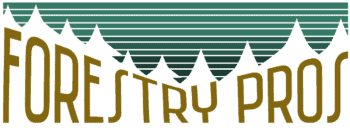- Best STIHL Brush Cutter Replacement Blade - December 8, 2023
- Box Elder Wood Uses - September 30, 2022
- Hackberry Wood Uses - September 25, 2022
My first introduction to Firewood was on a farm where Elm trees, dead and alive, were almost everywhere. I couldn’t work out why nobody was harvesting them for Firewood. My youthful enthusiasm and energy met their match as I tried to split the Elm logs.
Today, forty years on, I still remember the quizzical looks of my neighbors as they viewed my eventual capitulation to a type of wood that just doesn’t know how to give up. Is Elm a good Firewood? Not if you don’t have a mechanical splitter, but there is a whole lot more to it than that.
See also: How to find the best Firewood for your needs.

Bottom Line Up Front
Is Elm a good firewood? The short answer is ‘Well, it’s okay.’ Like the unimpressed wife or girlfriend, ‘It’s okay’ response. You can use it, but it wouldn’t be my first choice.
But a lot of Elm is used for Firewood, so let’s look at the good and bad points of using Elm as Firewood.
Firstly, of the almost forty Elm or Ulmus species found in the USA, there are three varieties of Elm generally used for Firewood:
- American Elm or White Elm — This is the most common Firewood species and produces the best coals.
- Red Elm — This tree grows so fast that it is considered an invasive species in many areas. However, it scores two top scores in that it has the highest BTU rating and is generally perceived s being the easiest of the three species to split.
- Siberian Elm — It is not an indigenous species and has the advantage of being resistant to Dutch Elm disease. It produces slightly more heat than American Elm.
Let’s take a quick look at how Elm stacks up as a Firewood
- Accessibility: Good, there is a lot of it about.
- BTU: Could be better but not too bad. The coals are good.
- Splitting: No, this is not a category for Elm. One of the worst Firewoods to split.
- Seasoning and smoke: Pretty much average. It will season in a year.
- Sparks: Nothing wrong here. Elm is so dense that sparks are rare.
- Aroma: No this is not one of Elm’s strong points. It really doesn’t smell good.
One of the most important criteria to evaluate a tree for good Firewood is accessibility. For me, the easier it is to get to, the better, and Elm is pretty good at that. Not only is Elm one of the most common tree species around, but as an added attraction, many Elm trees still standing are dead because of Dutch Elm Disease.
So can I cut the dead Elm tree down and use it for Firewood straight away? I hear you ask, hopefully. Sadly not. Elm contains a lot of water, and even the dead trees will still require some seasoning, but you may get away with a shorter seasoning period, like six months.
Yes, availability is good, and the bonus of collecting half seasoned Firewood from dead standing trees is a plus, but what about the other qualities required to make good Firewood? First, let’s look at how Elm performs as a heat-generating material.
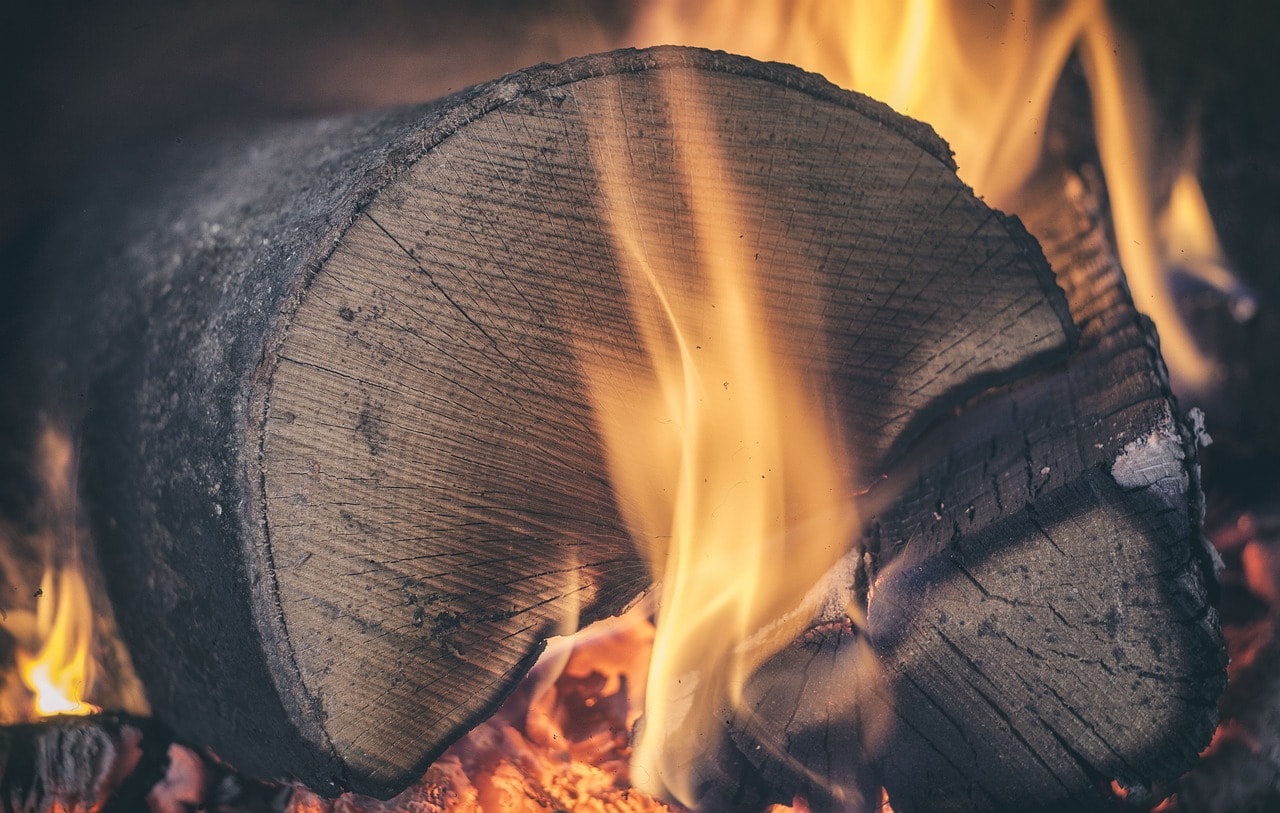
BTU of Elm
Red Elm burns the hottest of the three Elm, but the difference between the three is marginal.
- Red Elm BTU: 21,6 million
- Siberian Elm BTU: 20,9 million
- American Elm BTU: 20 million
Compared to more popular Firewood species like White Oak which has a BTU of 29,2 million, Elm comes a poor second. Other Firewoods with similar BTU scores to Elm are Birch at 20,8 million and Green Ash at 20 million BTU.
To view a comprehensive list of BTU values for various Firewoods, have a look at this link.
The British Thermal Unit is a rather peculiar way of measuring heat. The unit is the energy required to raise the temperature of one pound of water by one degree Fahrenheit at sea level. The most helpful part of the measurement is the ability to make comparative decisions, which serves as a guide to recommend better heat-producing Firewoods.
You may wonder why the BTU figure is quoted in millions, and that’s because it describes the amount of heat produced by a Cord of Firewood.
A Cord of Firewood is a unit of volume—precisely one hundred and twenty-eight cubic feet of wood. Expressed differently, it is a tightly packed stack of Firewood four feet wide, four feet high, and eight feet long.
Associated with heat values is the quality of the coals produced, and here Elm fares reasonably well. The coals made from Elm are long-lasting and on par or better than Birch or Aspen.
To sum up then, on the heat generation chart, Elm is not up there with the best but does produce a moderate amount of heat. So on the excellent, fair, and poor scale, it sits comfortably in the ‘fair’ section.
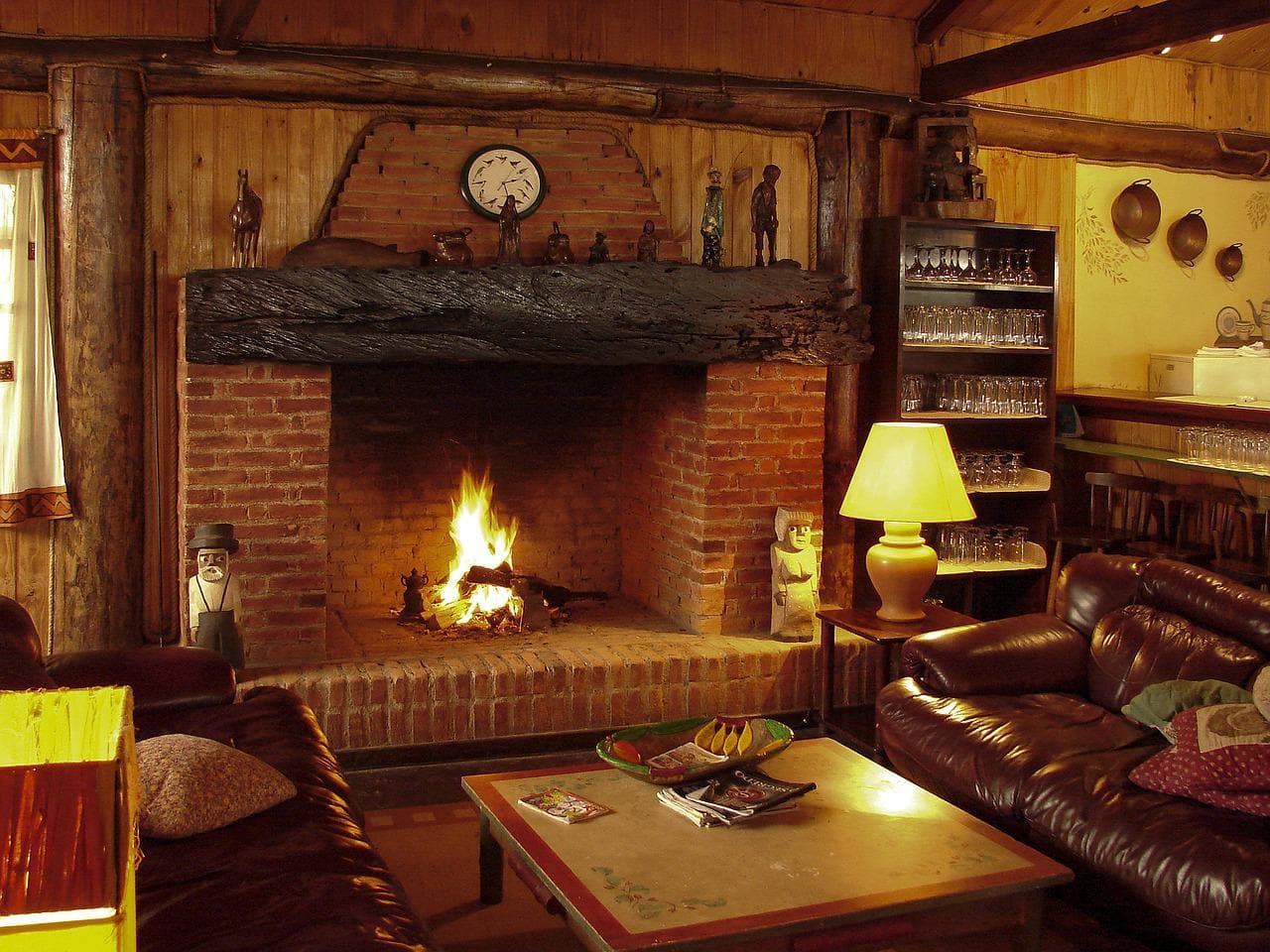
Splitting Elm
Splitting is an area where I’m afraid Elm will lose a lot of ground. Elm is a fibrous wood and is difficult to split if you try to split it by hand. It’s possible but challenging work. You can use a mechanical splitter to get around this problem, but it will not be that easy. Another way is to select smaller logs, say up to three or four inches in diameter, for your Firewood. These smaller logs do not require to be split, but it will add some time to our seasoning.
So in this category, Elm sinks into the ‘Poor ‘scale.
Seasoning and Smoke
To assess the amount of smoke a particular species of timber produces, it is essential to compare only properly seasoned Firewood. That means Firewood that has a moisture content of less than twenty percent. How long your stack of Elm will take to get to the magical twenty percent moisture content mark depends on a couple of factors:
- The moisture content of the tree before felling
- How successful you were in splitting the Elm
- The efficient manner in the way the Elm was stacked.
- The ambient atmospheric conditions of your area.
And in the end, you can bank on Elm, taking at least a year to season correctly, and if you are a touch unlucky, two years.
Seasoned Elm produces a small amount of smoke, so it will not score high in this section compared to the big hitters like Oak or Ash. This is because Elm contains a significant amount of water, and even when seasoned, the moisture in the wood tends to create some smoke. Please do not be tempted to burn unseasoned Elm.
If you try to use unseasoned Elm and the fire takes at all, you will end up with a tremendous amount of smoke and very little heat. Therefore, Elm remains in the ‘Fair’ category for smoke production.
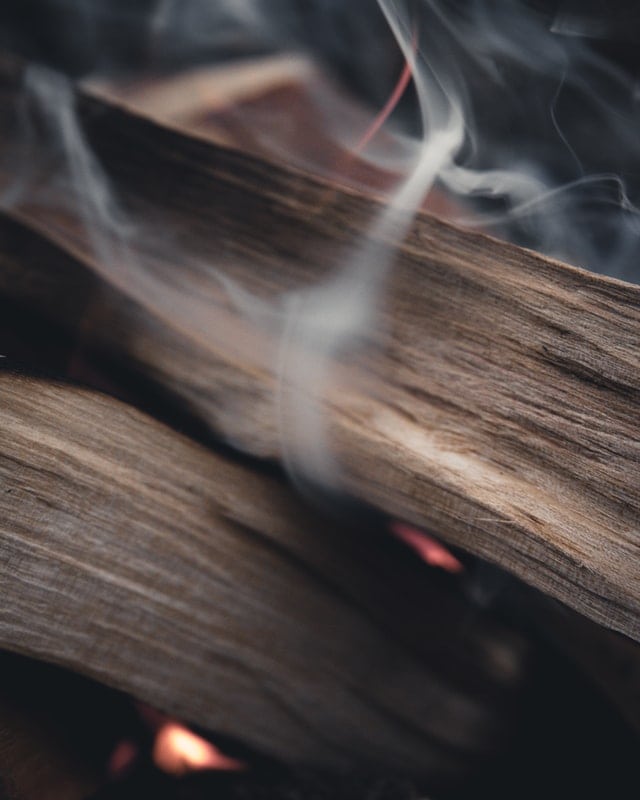
The Benefits of Using a Moisture Meter
To check on the moisture content of your Elm, I would strongly recommend using a Moisture Meter. They are cheap and can be used for a couple of other tasks. My favorite Moisture Meter is the Stihl model, which has served me well over the years. It costs under twenty-five dollars and can measure from six to forty-two percent moisture.
More affordable moisture meters, like the Stihl, have two probes or pins that are pierced into the wood to obtain a reading. This type of meter is fine for checking on Firewood.
I’ve used the General Tools MMD4 E Moisture Meter as well, and it was just as accurate and came with an audible alarm. However, it is slightly more expensive than the Stihl model.

Sparks
On the scale of Spark production, Elm fares a little better. The wood is very dense, creating a fire with a minimal spark. The various Firewoods are generally placed into two sections regarding the presence of sparks, namely ‘Few’ and ‘Many,’ so in this case, Elm is up there with the better group.
Keeping Elm on the upper tier, Elm produces very little Creosote. The reason for this is that Elm contains very little sap and consequently little Creosote. This is good news because the build-up of Creosote in your chimney can be a significant fire risk.
Aroma
This is usually a personal preference category. Some woods, like Apple and other fruit trees, produce a beautiful smell when burning, but sadly Elm fails this category quite miserably. The odor produced by burning Elm depends on where the Elm tree grew. If the Elm grew in a swampy area, the high water content in the wood would create a stink instead of a smell.
Another possible reason for the fire to have an unpleasant smell is the presence of insects in the wood or the fact that the wood was diseased.
So, I’m afraid in this category, Elm sinks to the bottom of the class.
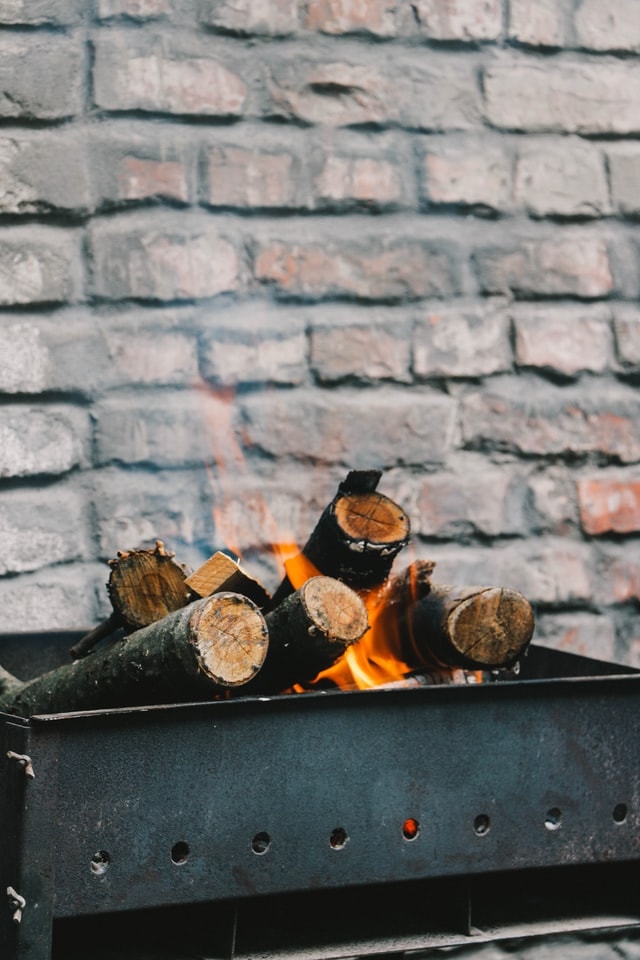
Some Alternatives to Elm
After my foray into trying to split Elm, the sage advice of my elderly neighbor was, ‘Sonny, leave the Elm and go for Oak.’ That was good advice. Oak, especially White Oak, is a far superior Firewood to Elm, but there are a couple of other hardwood options you can try.
- Ash
- Birch
- Cherry
- Maple
- Apple
If you really want to try a softwood, Fir is probably going to be your best bet, so see if you can get your hands on some Douglas Fir. It produces a fair amount of heat and not too much ash.

FAQ’s
Question: What is Dutch Elm disease?
Answer: Dutch Elm Disease is a fungal disease imported into America from Europe early in the Twentieth Century. Contrary to the name suggesting the source of the disease as Holland, the name reflects the nationality of the discoverers of the disease, Bea Schwarts and Christine Buisman. The more likely source of the disease is in Asia.
Estimates indicate that this disease has killed almost seventy-five percent of American Elms.
The disease is spread from tree to tree by insect infestation, but if the fungus has spread to the tree’s roots, the infection can spread through the interconnected root system.
The tiny Elm Bark Beetle feeds off dying and dead Elms, and subsequent generations migrate carrying the spores of the fungus to healthy trees.
Question: Why do some tree species smell foul when burning?
Answer: The prime cause of a bad-smelling fire is that the firewood has not been correctly seasoned and has a moisture content above twenty percent. Red Oak has a particularly bad smell if used in a fire without being properly seasoned, but another culprit in this category is Elm.
The causes of the foul odor around Elm are the presence of insects that live in the wood and the fact that Elm brings along with it the smell of the area it grew in. If the Elm you have sourced for Firewood grew in a swampy area, your fire will have a very unpleasant odor.
Even tree species that are regarded as having a pleasant smell, like Cherry, give off an unpleasant odor when they are incorrectly seasoned.
Not all unpleasant odors from fires are caused by the wood. For example, chimneys that have accumulated a lot of Creosote will also smell bad, so chimneys must be routinely cleaned out to prevent bad smells and as a safety measure.
Question: Is it possible to burn freshly cut Elm trees that have died?
Answer: Although the consensus is that Elmwood from dead trees should still be seasoned, there is evidence to suggest that trees that have died and shed their bark can be treated as ‘instant firewood.’ However, it is always best to test the wood with a moisture meter before bringing it to your fireplace.
So, Is Elm a Good Firewood? Final Thoughts
Elm is one of those woods that will be the sort of ‘Oh well, let’s burn it anyway’ type of Firewood. Despite not-so-good points, Elm doesn’t fare well on the splitting and smelling features, but it produces excellent coals and provides a satisfactory amount of heat. In addition, it is relatively safe by creating few sparks and very little Creosote.
The real bugbear of Elm is the difficulty in splitting it. This is where a mechanical splitter comes into play. Without a splitter, I’m afraid you will have trouble getting your Elm to season efficiently.
Probably the most telling factor about using Elm as a Firewood is that you will more than likely have to source your own Elm, as it is very rarely sold as a Firewood, particularly on its own.
Fortunately, dead Elm trees are pretty common, offering you the opportunity to source a free semi-seasoned firewood source
